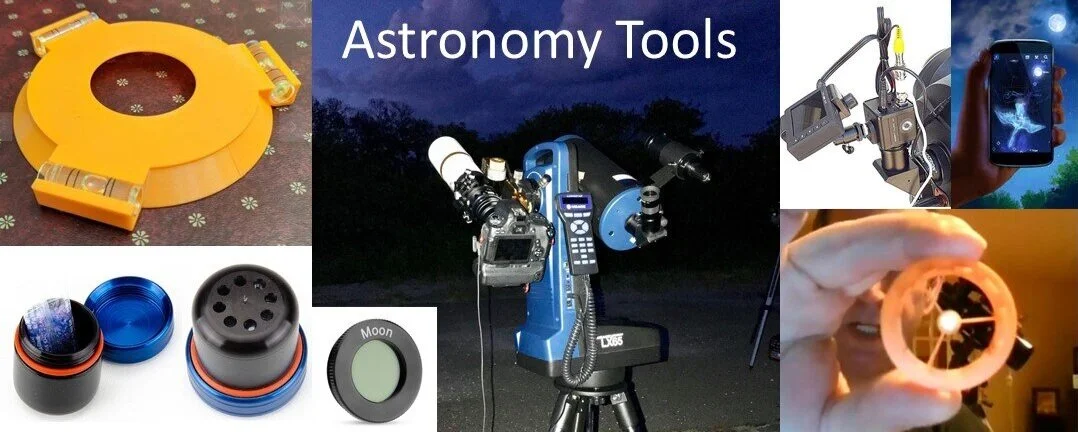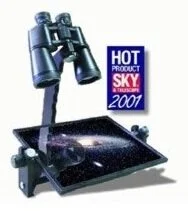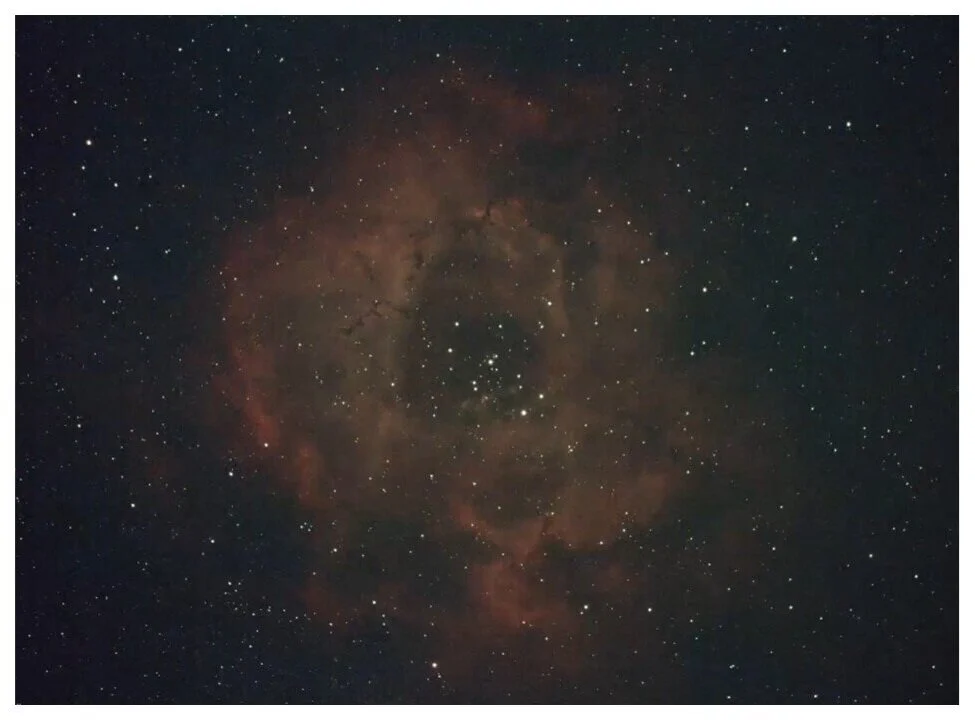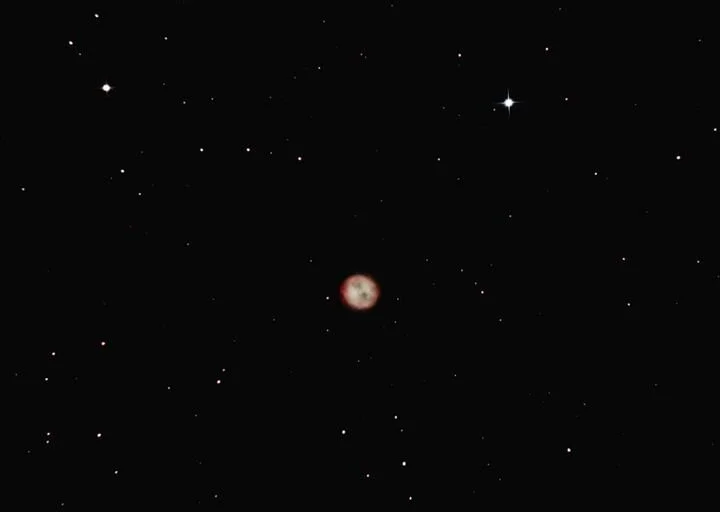Astral Projections Online April 2021
ASTRA held its virtual club meeting on March 12, 2021. We will continue the virtual meetings via Zoom during COVID. If you can’t participate because of issues with Zoom please contact us.
Club dues and 2021 membership. Returning members should have renewed by now. If you renew after March 31 you will be renewed as a new member. NOTE: Those members that paid for 2020 will be carried over to 2021 and should have already been notified.
Please check our Website for updated content at www.astra-nj.com
ASTRAL PROJECTIONS ONLINE (APO for short) is an email-linked publication for members only. If you exit APO to the club website or other resources you will need to use the emailed link again to get back to it. If you wish to retain a copy please bookmark or refer back to the email. We will make all efforts to post by the first week of the month.
Submissions Welcome: Members are invited to submit articles, photos, news, or stories for inclusion with Astral Projections Online. Please contact the ASTRA Webmaster.
Event Calendar
ASTRA’s next virtual meeting is on Friday, April 9, 2021, at 7 PM.
Please note at this time future in-person events will be canceled for the duration of the Coronavirus / CONVID-19.
Please check your emails for updates.
EVENT Cancellations: Members will receive email notification of an event cancellation, or call the ASTRA Hotline: 609-971-3331
April is Global Astronomy Month! Join Astronomers Without Borders for the world's largest celebration of the night sky and astronomy in its 12th year!
International Dark Sky Week 2021 during the week of April 5-12 … Event Calendar
Website Updates …
Please visit our club website. We continue to have additional updates, if there is some content that would be useful to members please let us know.
"Astronomy compels the soul to look upward, and leads us from this world to another."
- Plato, Philosopher
Club Virtual Meeting - Astronomy Observing Tools - Jim Webster
ASTRA Members preparing for the March 12 overview, Astronomy Observing Tools.
For the March 12 ASTRA Meeting, Jim Webster presented to the membership Astronomy Observing Tools. This was not about items we would normally associate with our observing we would use with our Star Parties.
The overview started with the benefits of what is possible with todays cell phones. There are many apps available today making the cell phone a Swiss Army Knife for Astronomy.
You can find interactive Planispheres, Compass, Level, Clear Sky Chart, GPS, Collected information making the cell phone a planetarium in the palm of your hand.
Moving on we discussed the latest uses of the cell phone with the recently introduced Celestron Explorer telescopes. With an attachment to mount your cell phone onto the telescope, you can manually guide the telescope to the object you're looking to view. We also noted the same can be done with binoculars with the right attachment.
This led us to a discussion initiated by Ryan Nipple at the end of the presentation on telescope alignment. Is there a telescope out there with full auto-alignment? The outcome of this was no, not really. We have telescopes with go-to features but not with true auto-alignment. You will need to polar align your telescope for this to work properly. We also discussed the proper alignment of finder scopes.
Image source from Celestron.
Without proper alignment using your telescope to get to the correct object is near impossible. This leads to much frustration for anyone not familiar with the steps involved. To learn more on the proper setup of your finder scope you can find video linked to the club library. … Finder Scope Setup
APO Editor’s Note: After the meeting, I checked into the Auto or Self-Alignment telescopes we were trying to figure out was at the Photo Center in Brick, NJ. Meade had on the market, the Meade Lightswitch. Why it was discontinued, I did not do any further research on it. Safe to say there is not a self-alignment telescope. For a brief summary on the Meade Lightswitch, you can find it on YouTube.
Image source from Meade.
Another item we discussed for our review is using a mirror with binoculars for viewing the night sky. It’s an interesting concept that warrants some investigation. The idea is to have the mirror on a mounting surface and have the binoculars pointed down at the mirror. From there you can view the sky in the reflection in the mirror. Of course, such a setup would need to be physically moved to reposition to the next object you wish to view.
Binocular observing did get a significant representation at the March Meeting from cell phones, finder scope attachments, and binocular chairs to several possible mounts to support the binoculars during a viewing session.
Image source from Sky & Telescope.
An item that has proven useful is the Wilcox Rings for the Newtonian telescopes. It is an extra set of tube rings that allows for the rotation of the optical tube to reposition the eyepiece. Newtonians on an equatorial mount have a bad habit of the eyepiece moving into spots where you can’t reach unless you're using a ladder. The Wilcox ring will take care of this. For more check out this YouTube Video.
We also reviewed an assortment of filters for both the telescope and binoculars. The next item of note and one that has already proven useful is the Wilcox Ring for the Newtonian telescopes. The idea of this is to be able to rotate the eyepiece back into a more comfortable position. Newtonians on an equatorial mount have a bad habit of the eyepiece moving into spots where you would need to be either very tall or short depending on where it ends up. The Wilcox ring would take care of this.
We also had several slides on the benefits of 3D printing and the many ideas of making astronomy easier. If you can think of an idea, most likely it can be printed. You can see some in the introduction picture for this article.
You can find more of our full club presentation with additional items that were not discussed in this summary from March 12 on ASTRA YouTube.
APO Editors Note: The audio of our club presentation this month has a bit of an echo. I am trying to compensate for an issue with ZOOM and its handling of PowerPoint and YouTube videos. The echo is my microphone setup with a new application I am trying in my attempt to clearing some of the issues with ZOOM.
Asteroids, Meteors, Meteorites
We had a bit of a discussion after the March 12 presentation on the recent meteor that exploded over Vermont on March 7. It was reported to have rattled buildings with an energy equivalent of 440 pounds of TNT. The fireball was spotted by witnesses as it zoomed through the atmosphere at about 42,000 miles per hour. For more check out the linked YouTube Review or at NASA Meteor Watch.
Many meteors can be spotted by using an Allsky Camera. If there is an interest in them we can discuss it at a future club meeting. More on this device can be found further below.
We continued a general discussion on what are the differences between Meteors, Meteorites, and Meteoroids. The following is a short explanation from VectorGlobe YouTube Channel that is linked here for a short video overview.
Asteroids: These are the rocky and airless leftovers from the formation of planets in our solar system. They mostly orbit our sun in the asteroid belt between Mars and Jupiter and range from the size of cars to dwarf planets.
Comets: Comets are dirty space snowballs of mostly ice and dust that formed during the birth of the solar system 4.6 billion years ago. Most comets have stable orbits in the outer reaches of the solar system past the planet Neptune.
Meteoroids, Meteors, Meteorites: Meteoroids are tiny asteroids or the broken-off crumbs of comets and sometimes planets. They range in size from a grain of sand to boulders 3 feet (1 meter) wide. When meteoroids collide with a planet's atmosphere, they become meteors. If those meteors survive the atmosphere and hit the planet's surface, their remains are called meteorites.
You can get a more detailed overview that is the source for VectorGlobe, at livescience.com.
We also have a club link to Darrel Heath's “The Night Sky” video overview that is on YouTube.
Another resource we are linked to is Seeker on Youtube. It is a 17 part video series on Asteroids and Meteors.
AllSky Camera
If there is an interest in tracking meteors overnight the AllSky Camera from AllSky Optics is one such device that can perform this function. It can be mounted on a building or on a tripod to make it a portable device that can be used for star parties or presentations.
APO Editors Note: I am purchasing one myself.
For more on the AllSky Camera visit their links:
Facebook
Webpage
Image source from AllSky Optics.
Virtual Star Party
On March 20 we had our first virtual star party. It was recommended to keep it to the high school group as a school-only function. Sadly they were not able it make it. That said we quickly sent out emails and Facebook notice that it was open to anyone on short notice. We did get some members to join in and we are grateful for it. It has helped us identify some of the issues we would need to work through.
Hopefully, we will get to hold another virtual star party in the near future. This will be for club members with advanced notice and the school can optionally join us with the understanding it will be a joint session.
We had Jim Webster working Zoom, with some Starry Night Application presentation, and recording the session. Sam Granovsky doing the most important part, all the telescope and imaging work. Below are the images that were collected by Sam. Sam spent quite a few hours in the cold to provide us these images and I would like to thank him for his efforts.
Jim Webster and Astro-cat Penny, worked the Zoom session and Starry Night presentation for the star party objects.
Sam Granovsky and his telescope setup.
NOTE: The images below were live stacked only, using the ASIair Pro. They were not post-processed externally.
The first object for our virtual star party was the Orion Nebula. M42 / NGC 1976
Next, we had both the Horsehead Nebula (Barnard 33) and the Flame Nebula (NGC 2024)
The crown jewel for the night was the Rosette Nebula. NGC 2244
First-time imaging of Thor’s Helmet. NGC 2359 It did not disappoint and came in without any issues.
Last up to wrap up our virtual star party was the Whirlpool Galaxy. M51a / NGC 5194
ASTRA Member Astrophotos.
“Beautiful Halo”
By Rosemarie Lahosky Spedalier -
February 27
Beautiful halo around the Moon last night on February 27. The photo was taken with a cell phone.
“Owl Nebula” (M97)
By Ron Bernknopf - March 3
Here is Messier 97, The "Owl Nebula" in Ursa Major. This is my 2nd attempt at M97. The last was February of last year. M97 lies 2030 light-years away and was formed from the wind of the central star that is evolving into a white dwarf.
33x 30minute exposures.
“Spiral Galaxy” (NGC2903)
By Ron Bernknopf - March 4
Spiral Galaxy NGC2903 in the Constellation of Leo. It was first observed by William Hershel on November 16, 1784. NGC2903 is 30 million light-years away.
6" Reflector, AVX mount, Canon T6 w/ L-eNhanced clip filter. 33x 3 minutes with 20x 3 minutes darks and flats.
Medusa Nebula (Sharpless 2-274)
By Ron Bernknopf - March 8
The "Medusa Nebula" is found in the constellation Gemini. This was discovered in 1955 by UCLA Astronomer George Abell. It is an old Planetary Nebula. This is the final death of a star before becoming a White Dwarf. Medusa is about 1500 light-years away. This was a total of 45 x 3-minute exposures.
Jellyfish Nebula (IC443)
By Ron Bernknopf - March 9
A supernova remnant about 5000 light-years away in the constellation of Gemini. It’s a pretty dim Nebula and I used 18x 5-minute exposures. My 1st time using this exposure length. I tried shooting this once before but 3 minutes didn't bring out enough.
I hope you can see the "tendril" looking parts coming off the crescent shape that make this look like a Jellyfish.
Leo Triplet (M65, M66, NGC 3628)
By Ron Bernknopf - March 14
These three Galaxies are in the Constellation of Leo and are called the "Leo Triplet". They are M65, M66, and NGC3628 ("The Hamburger Galaxy"). They are also known as the M66 group and are located around 35 million light-years away. This was a total of 18 x 5-minute exposures.
March 22 The Moon was at 69.9% (waxing gibbous) By Ron Bernknopf. 50 x 1/1000 seconds @ ISO 1600.
Whale Galaxy (NGC 4631)
By Ron Bernknopf - March 30
The Whale Galaxy is a barred spiral galaxy in the constellation Canes Venatici. The galaxy's slightly distorted wedge shape gives it the appearance of a herring or a whale, hence its nickname. The Galaxy is 30 million light-years away. 20x 3-minute exposures.
“The Periodic Table Of Deep Sky Objects”
It ranks messier objects by the difficulty of viewing (with an 8-inch telescope) and it also indicates the best season to observe said objects. This ranking is a personal opinion of the author Tom Urbain, who understands some objects might seem easier or harder to see for other people. The goal here is to provide some guidance to people starting out in stargazing.
Note: The objects are also classed from dimmest (bottom) to brightest (Top). Follow the white line between the cells.
Higher resolution image on https://starlust.org/messier-catalog/
Messier Objects Ranked By Difficulty of Viewing by Tom Urbain, with data source by Tony Flanders.
For more on this and other astronomy topics go to StarLust.org
Added to our Astronomy tools page on the club website.
For more go to NASA Jet Propulsion Laboratory webpage: What’s Up: Skywatching Tips From NASA
This article and images are distributed by NASA Night Sky Network
The Night Sky Network program supports astronomy clubs across the USA dedicated to astronomy outreach.
Visit nightsky.jpl.nasa.gov to find local clubs, events, and more!
Watch the Lion: Celestial Wonders in Leo
David Prosper
Your view of the three galaxies in the Leo Triplet won’t look as amazing as this image taken by the VLT Survey Telescope unless you have a telescope with a mirror 8 feet or more in diameter! Still, even a small telescope will help your eyes pick up these three galaxies as “faint fuzzies”: objects that seem blurry against a background of pinpoint stars. Let your eyes relax and experiment with observing these galaxies by looking slightly away from them, instead of looking directly at them; this is called averted vision, a handy technique that can help you see details in fainter, more nebulous objects.
Image Credit: ESO, INAF-VST, OmegaCAM; Acknowledgement: OmegaCen, Astro-WISE, Kapteyn I.
Leo is a prominent sight for stargazers in April. Its famous sickle, punctuated by the bright star Regulus, draws many a beginning stargazer’s eyes, inviting deeper looks into some of Leo’s celestial delights, including a great double star and a famous galactic trio.
Leo’s distinctive forward sickle, or “reverse question mark,” is easy to spot as it climbs the skies in the southeast after sunset. If you are having a difficult time spotting the sickle, look for bright Sirius and Procyon - featured in last month’s article – and complete a triangle by drawing two lines to the east, joining at the bright star Regulus, the “period” in the reverse question mark. Trailing them is a trio of bright stars forming an isosceles triangle, the brightest star in that formation named Denebola. Connecting these two patterns together forms the constellation of Leo the Lion, with the forward-facing sickle being the lion’s head and mane, and the rear triangle its hindquarters. Can you see this mighty feline? It might help to imagine Leo proudly sitting up and staring straight ahead, like a celestial Sphinx.
The stars of Leo: note that you may see more or less stars, depending on your sky quality. The brightness of the Leo Triplet has been exaggerated for the purposes of the illustration - you can’t see them with your unaided eye.
If you peer deeper into Leo with a small telescope or binoculars, you’ll find a notable double star! Look in the sickle of Leo for its second-brightest star, Algieba - also called Gamma Leonis. This star splits into two bright yellow stars with even a small magnification - you can make this “split” with binoculars, but it's more apparent with a telescope.
Compare the color and intensity of these two stars - do you notice any differences? There are other multiple star systems in Leo – spend a few minutes scanning with your instrument of choice, and see what you discover.
One of the most famous sights in Leo is the “Leo Triplet”: three galaxies that appear to be close together. They are indeed gravitationally bound to one another, around 30 million light-years away! You’ll need a telescope to spot them, and use an eyepiece with a wide field of view to see all three galaxies at once! Look below the star Chertan to find these galaxies. Compare and contrast the appearance of each galaxy – while they are all spiral galaxies, each one is tilted at different angles to our point of view! Do they all look like spiral galaxies to you?
April is Citizen Science Month, and there are some fun Leo-related activities you can participate in! If you enjoy comparing the Triplets, the “Galaxy Zoo” project (galaxyzoo.org) could use your eyes to help classify different galaxies from sky survey data! Looking at Leo itself can even help measure light pollution: the Globe at Night project (globeatnight.org) uses Leo as their target constellation for sky quality observations from the Northern Hemisphere for their April campaign, running from April 3-12. Find and participate in many more NASA community science programs at science.nasa.gov/citizenscience. Happy observing!
Tonight’s Sky: April
In April nights are filled with starry creatures. Near the Big Dipper, you will find several interesting binary stars. You can spot galaxies like the Pinwheel Galaxy, M82, and M96 the last of which is an asymmetric galaxy that may have been gravitationally disrupted by encounters with its neighbors.
Other Calendar Items of Interest
Globe at Night
The Globe at Night mentioned in is month’s Night Sky Network article is an international campaign to raise public awareness of the impact of light pollution by inviting citizen-scientists to measure their local night sky brightness and submit their observations from a computer or smartphone. Light pollution threatens not only our “right to starlight”, but can affect energy consumption, wildlife and health.
More than 200,000 measurements have been contributed from people in 180 countries over the last 14 years, making Globe at Night the most successful light pollution awareness campaign.
While not required to participate, a Sky Quality Meter can also be used to provide a more detailed report of your local sky conditions. The Sky Quality Meter measures how clear the night or site is. Compare the sky brightness at different sites with measured results!
Prior to the COVID outbreak, several ASTRA club members were working on a Night Sky report for Island Beach State Park for their efforts to become a more eco-friendly location and in turn, maybe help us with better viewing conditions with some recommended light fixture changes. Hopefully, when COVID ends or we get permission to reenter the park at night we can resume that effort.
Sky Quality Meter uses:
Keep track of the evolution of light pollution in your area.
Monitor sky brightness through the night, night-to-night, and year-to-year.
Determine which nights are the greatest for finding the faintest of lights.
Calibrate the effect of sky brightness on qualitative measures such as the Bortle Scale.
Investigate how sky brightness correlates with the solar cycle and month-to-month sunspot activity.
Help provide local ground truth for future sky brightness prediction with the Clear Sky Clock.
The Sky Quality Meter can be found at OPT.
APO Editors Note:
I joined the Globe at Night in February and have been submitting data from my home location. You just look up and report on the viewing conditions on one of several constellations for that particular time of year.
OPT University Astronomy and Astrophotography Blog
On those overcast and rainy days or if you're looking for information, OPT has a selection of Observational Astronomy and Astrophotography overviews. Well worth checking out. OPT University
Submissions Welcome
Members are invited to submit articles, photos, news, or stories for inclusion with Astral Projections Online. Please contact the ASTRA Webmaster.








































